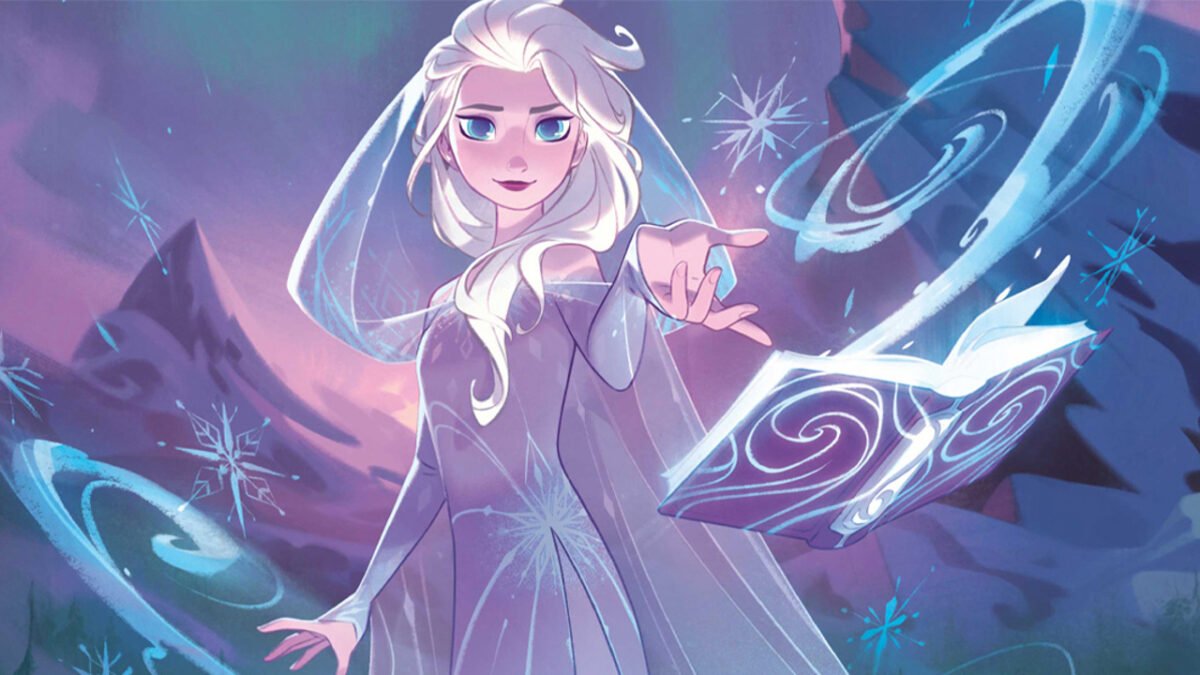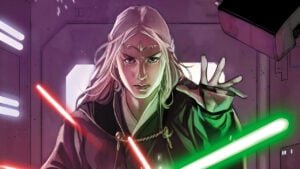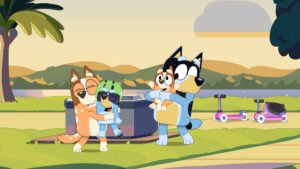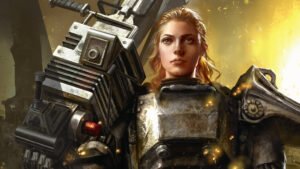Given the ever-rising popularity of trading card games and the evergreen relevance of Disney in pop culture, it seems a game like Disney Lorcana was inevitable: translating the iconic characters into collectible cardboard form. Luckily for fans of this medium or the extensive licenses behind it, it’s also a promising game in its own right.
In Disney Lorcana, players are whisked away to the titular realm and the Great Illuminary at its center, where they use magical “ink” to summon familiar characters from across Disney’s century of stories, collect “lore” for safekeeping, and compete with other players. Those characters may be traditional versions straight out of a movie or storybook, embellished or heightened versions, or drastically different interpretations. Ultimately, the goal is to be the first to score twenty lore points.
Whether you’re looking to learn to play Ravensburger’s hot new TCG or eagerly awaiting the launch of its second set, Rise of the Floodborn, later this month, here are the things we’re loving about Disney Lorcana (and a couple things that we hope to see improve):
High: Amazing Art Direction
You don’t need to be steeped in the art of TCGs or a massive Disney geek to appreciate the quality of the art in Disney Lorcana. From the portraits used on the packaging down to the least exciting common card, each scene has clearly been rendered with love. It would have been easy to draw from the vast repository of art assets at Disney’s disposal and run cards with scenes copy-pasted from movies or storybooks to fill in some gaps. Yet Ravensburger has gone all-in with original art, and the result is all the stronger for it.
I also love some of the unique twists seen on existing characters so far. Lorcana’s character cards fall into three categories (so far): Storyborn, Dreamborn, and Floodborn. Storyborn cards show a traditional take on that character, while Dreamborn cards take a little liberty by exaggerating or highlighting a certain trait—and Floodborn cards portray a very different outcome for that character’s story.
Take Belle for instance. The card “Belle, Strange But Special” shows the bookish princess in all her familiar glory; the Dreamborn version “Belle, Inventive Engineer” shows her embracing her father’s craft and becoming a tinkerer in her own right; and in the Rise of the Floodborn, we’ll see her trade her books for a bow and arrow to become the unlikely rogue “Belle, Hidden Archer.”
A similar concept was central to the mobile game Disney Mirrorverse (which made Belle a sorceress and gave Monsters Inc.‘s Sully power armour), but Lorcana shows more potential in this department by allowing players to choose which alternate universe iterations they want to use.

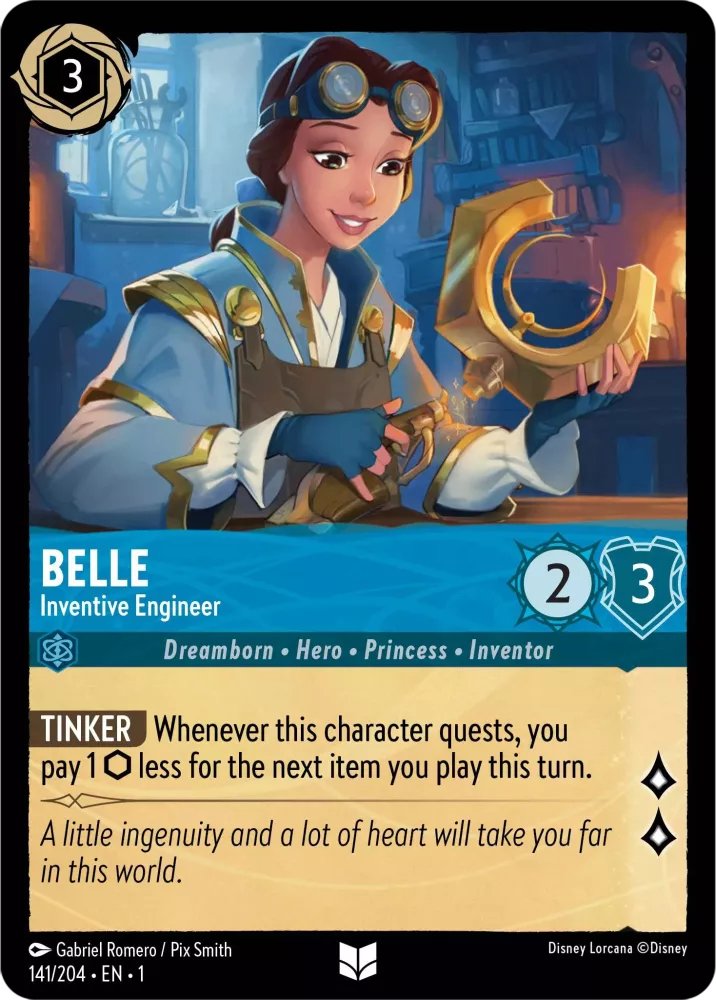

Low: The Relevance of Ink
There are six colours on Disney Lorcana cards: Amber, Amethyst, Emerald, Ruby, Sapphire, and Steel. These are akin to the colours of mana in Magic: The Gathering or the types in the Pokémon TCG, for those who are familiar.
Cards of each colour fall into certain archetypes—Amber portrays characters that are purposeful and persistent, Steel cards are powerful and large, and Emerald characters are hasty and flexible, for example. Heroes and villains are found in each colour, refreshingly. You can even find the same character portrayed in multiple colours, like Mickey Mouse, who appears in each colour once in the first set alone.
These “colour identity” mechanics are fundamental, but they currently feel a little wishy-washy. Perhaps it’s unfair to compare a fledgling game to the juggernaut that is Magic: The Gathering, but for a well of IPs that is so recognizable, I just don’t feel the same gravity behind these distinctions as I do in other TCGs. Identities can (and hopefully will) become a little more intuitive and distinct as this new system develops.
Although, restricting decks to only two ink colours feels like Disney Lorcana‘s biggest mechanical misstep so far. I appreciate the instinct to keep things simpler for young players, but this call could end up limiting players’ imaginations a little too much down the line.
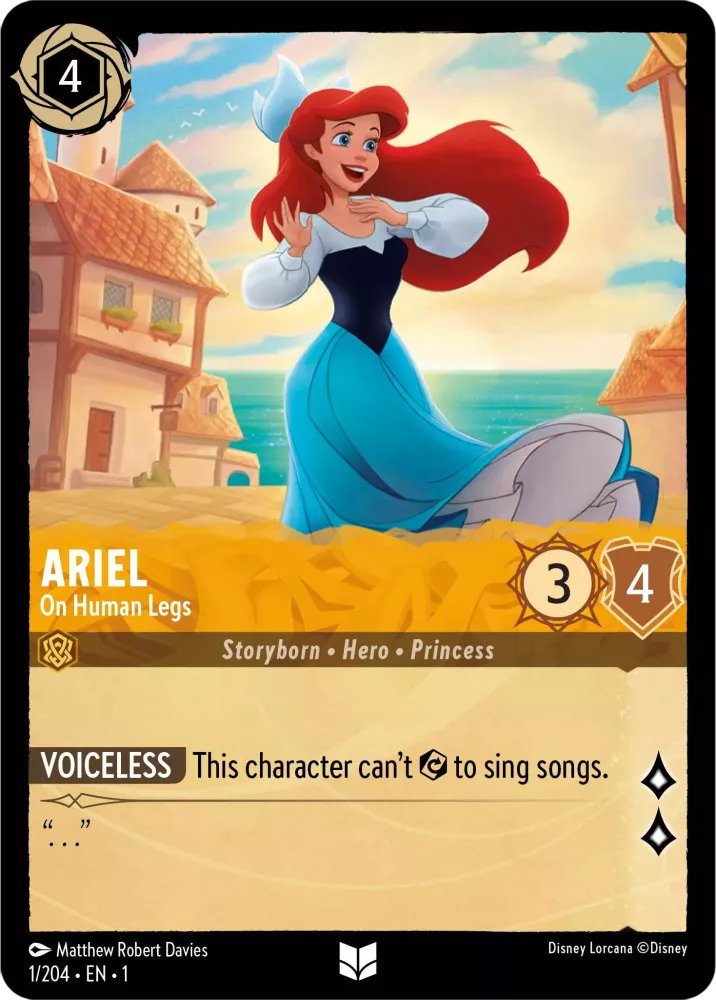

High: Lorcana‘s Unique Spin on Mechanics
Let’s face it: if you’ve played enough TCGs, you can see several common themes and mechanics across multiple games, most of which can be linked back to Magic: The Gathering or a deliberate attempt to swerve away from the medium’s progenitor. Disney Lorcana is no exception. Instead of tapping a creature to attack like in Magic, Illumineers “exert” their characters to quest for lore or challenge opposing characters—call it what you will, but either way you’re turning a card sideways to achieve an effect.
Where Lorcana differentiates itself is how it applies that familiar DNA. You don’t need to stress about pulling the right energy card or land card, as in the “other” TCGs—you just play a card into your “Inkwell” and it becomes a permanent power source. You can tap/exert a character to quest for lore counters and race for the finish line, or to challenge opposing challenged characters and slow down the opposition.
Disney Lorcana‘s cards are suitably steeped in “flavour”—the metaphor behind the mechanics, the elements of the physical cards that help players buy into the imaginary circumstances of the game. For instance, there are specific “Song” cards, a type of action card that can be played by exerting a character instead of spending the ink cost. In essence, you can have Dr. Facilier sing “Let It Go” to blast an opposing character into their owner’s inkwell, or Stitch belt out “Be Prepared” to clear the board.
Lorcana takes this idea just a little farther in some instances, resulting in some rich gameplay favour. Say you have Ariel on the field and want to exert her to play “Part Of Your World”—but what’s that? You’ve played “Ariel, On Human Legs,” who has the ability Voiceless. This is Ariel in human form, deprived of her voice by Ursula.
It’s refreshing to see so much character in a TCG. Given the high familiarity of the iconic Disney roster, anything else would’ve been a bit of a disappointment.
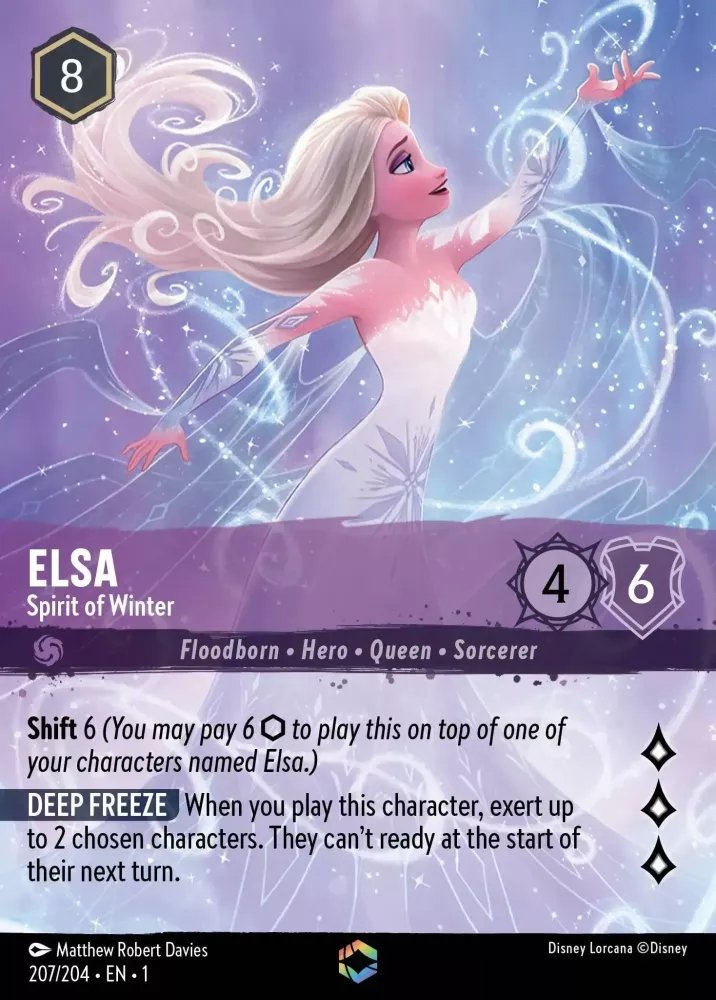

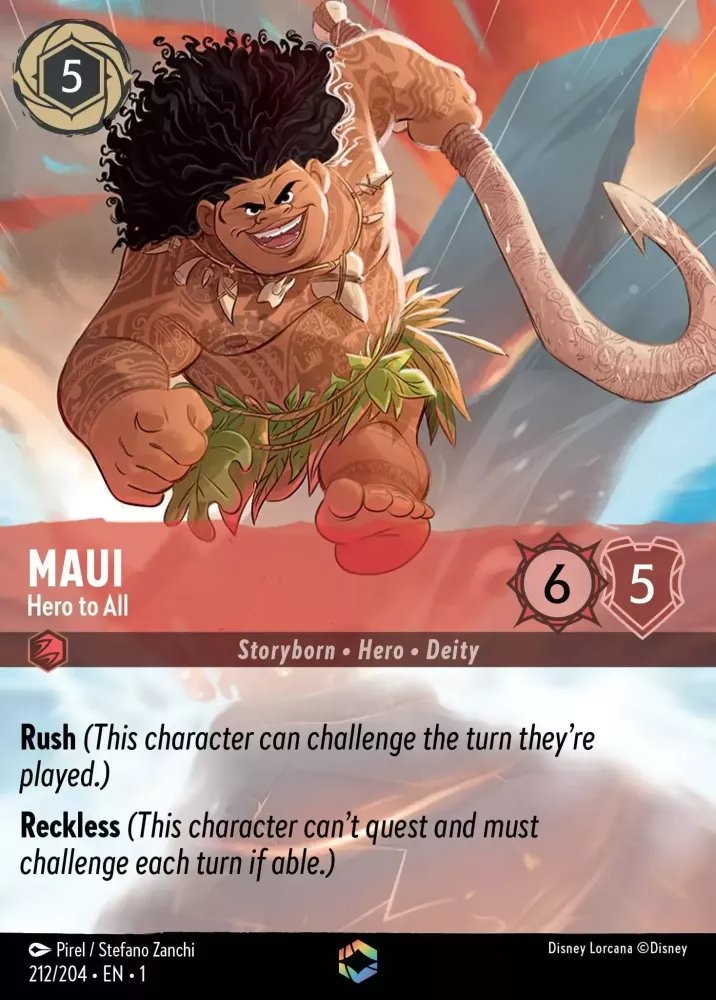
Low: Product Scarcity
Disney Lorcana started rolling out in mid-August, with an official retail launch in most regions on September 1, but you’d be hard-pressed to find any product sitting on store shelves. Sealed product has been nearly impossible to find at retail, and almost certainly not at retail prices. Ravensburger publicly acknowledged the lack of product availability in a post shared on August 31, pledging to reprint The First Chapter in Q1 2024.
Naturally, this has created a golden opportunity for resellers to gouge customers. Services like Facebook Marketplace are rife with people trying to extort would-be Lorcana players and Disney fans at prices far beyond retail. As of this writing, TCGPlayer has single D23 promo cards listed for over a thousand dollars, and any alternate art cards from The First Chapter are worth at least $140 (with the most expensive non-promo card being the alternate “Elsa, Spirit of Winter” at a whopping $758.44 market price).
One would hope that the shortage of Disney Lorcana product is due to a complete underestimation of demand on Ravensburger’s part, and not an attempt to inflate the game’s reputation by creating this wonderland for scalpers. Then again, who would bet against a collectible card game based on some of the most beloved faces in pop culture selling like wildfire?
Hopefully this situation improves with the launch of Rise of the Floodborn in the coming weeks, and well into 2024. It’s hard to get excited about a new game, no matter how well-designed or imaginative it is, if you can’t get it without paying a fortune.
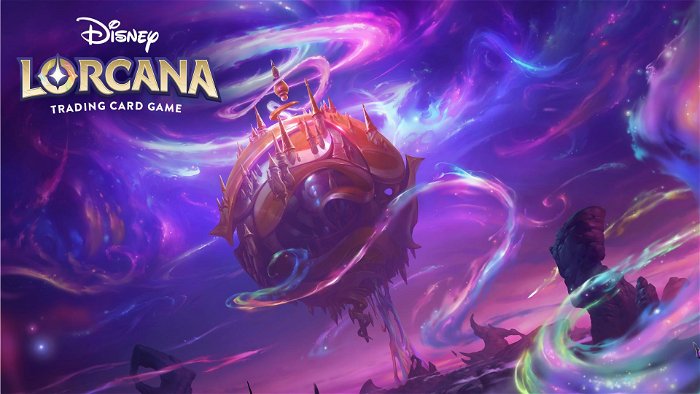
High: Fulfilling & Fun For All Ages
Magic: The Gathering is a masterclass in game design, but it can be hard to process some of the concepts at first; the Pokémon Trading Card Game is more welcoming for youngsters, though if those youngsters have zero interest or investment in “catching them all,” it’s not as appealing.
Disney Lorcana has the accessibility of Pokémon TCG (if not moreso), with all the window dressings of the most recognizable house of intellectual properties you could find. The rules are simple, and the stakes are expressed with beloved characters. An uninitiated grandparent might glaze over when asked to play or purchase cards from other games, but tell them Mickey’s involved and they can easily get up to speed.
Of course, there’s plenty of room for older players and TCG pros to strategize and scratch that intellectual itch for more meaningful play. Even with the currently small initial pool of 204 cards, the metagame has proven surprisingly diverse. Off the hop, Lorcana has hit that delicate sweet spot of being easy enough for kids to learn, while offering advanced players room to stretch their tactical muscles.
With the second set about to drop and a third set already confirmed, we have high hopes for the future of Disney Lorcana. It’s been a while since a new trading card game truly shook up the medium’s status quo, and this could just be the game to give the other big dogs a run for their money.
(Check out Ravensburger’s store locator to find a friendly local game store that may carry Disney Lorcana or run official League events.)
